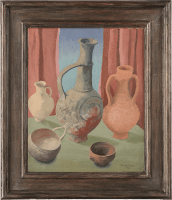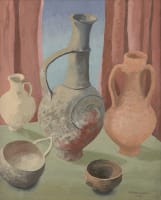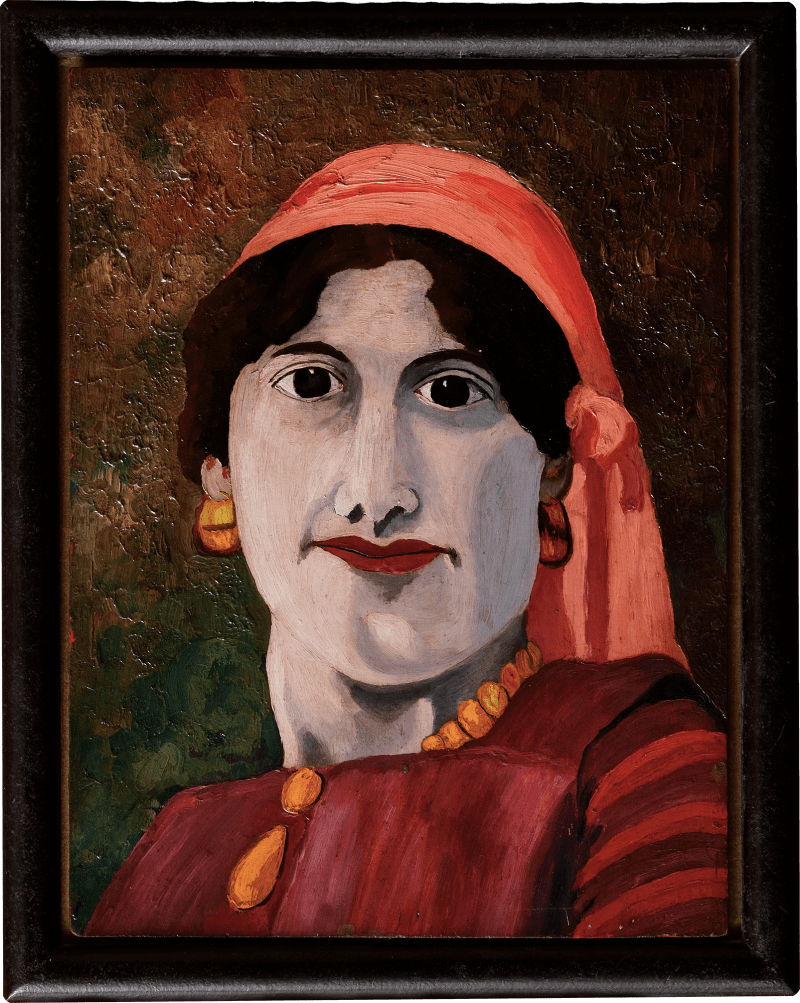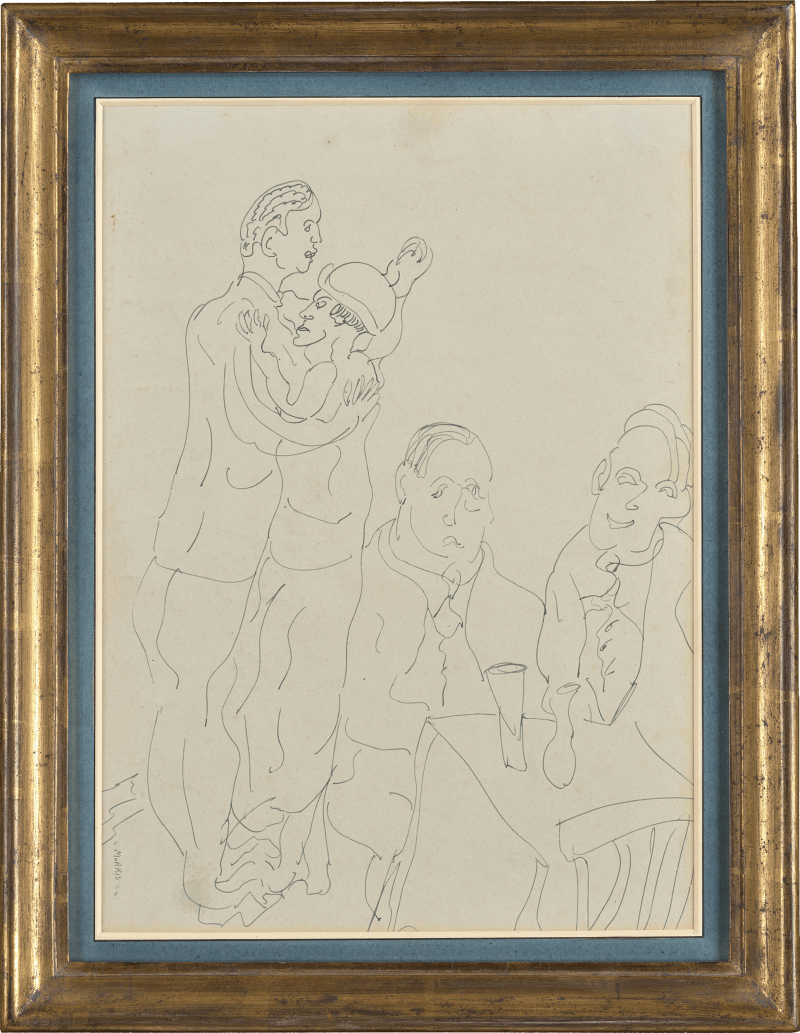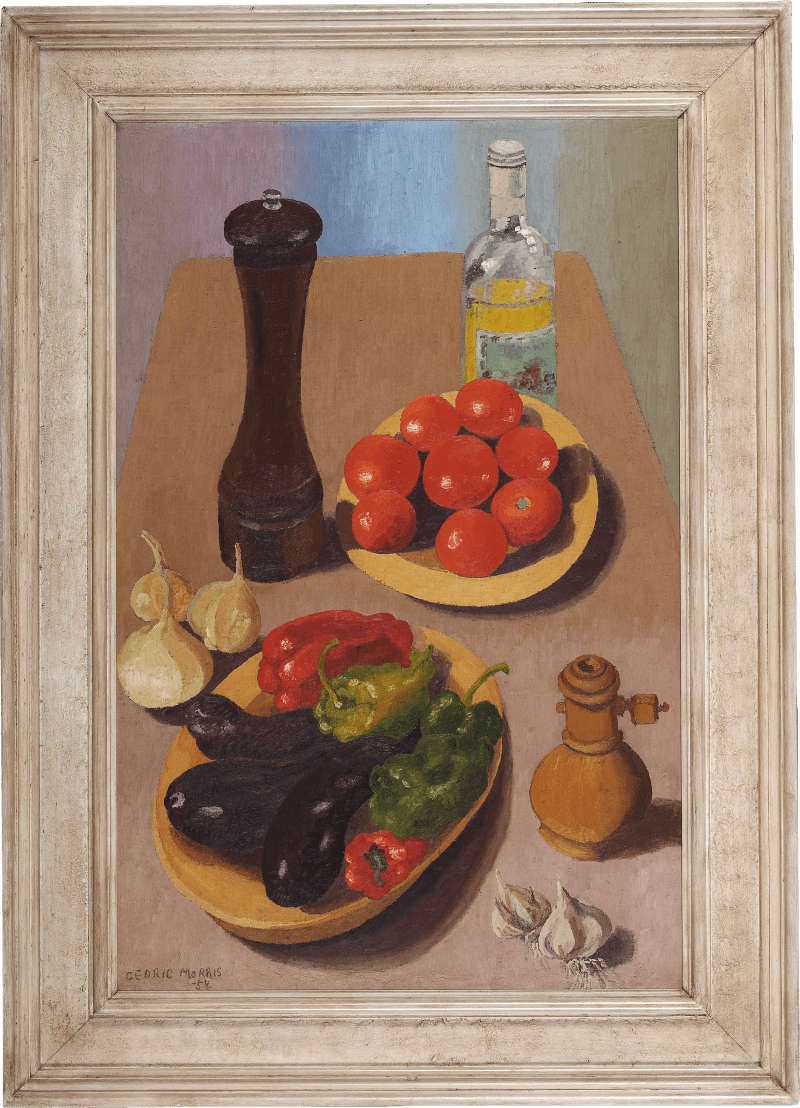This late work by Cedric Morris was painted in the early months of 1968 when he was staying near Cyrene in Libya.
During the winter months when the East Anglian School of Painting and Drawing was closed, Morris, momentarily relieved of his duties as an art tutor, would disappear abroad, sometimes for many months, painting landscapes and collecting plant specimens. This was a routine he followed annually after the Second World War, often with friends and sometimes on his own. The Maghreb was one of Morris’s favourite destinations and one that he travelled to throughout his life from the early 1920s up until 1970.
Morris would paint predominantly landscapes during his trips abroad although, towards the end of his life, he became particularly interested in pottery. Exotic pots had always played a central role in Morris’s still-life paintings – he would often paint his flowers sitting in decorative jugs retrieved from his trips around the Mediterranean – but...
This late work by Cedric Morris was painted in the early months of 1968 when he was staying near Cyrene in Libya.
During the winter months when the East Anglian School of Painting and Drawing was closed, Morris, momentarily relieved of his duties as an art tutor, would disappear abroad, sometimes for many months, painting landscapes and collecting plant specimens. This was a routine he followed annually after the Second World War, often with friends and sometimes on his own. The Maghreb was one of Morris’s favourite destinations and one that he travelled to throughout his life from the early 1920s up until 1970.
Morris would paint predominantly landscapes during his trips abroad although, towards the end of his life, he became particularly interested in pottery. Exotic pots had always played a central role in Morris’s still-life paintings – he would often paint his flowers sitting in decorative jugs retrieved from his trips around the Mediterranean – but by the mid-to-late 1960s he was painting them on their own. One of the best examples of his pot studies from this period is Margaret’s Pots [Glynn Vivian Art Gallery] painted at Morris’s house Benton End in 1965.
Morris’s trip to Libya in 1968 had been eventful. On arrival, he found himself stranded at the airport in the middle of the night and when he finally arrived at Cyrene he was underwhelmed with what he found. He considered the countryside surrounding the ancient city ‘not at all paintable’ (Morris never enjoyed painting arid landscapes) and found the extensive ruins in the city itself quite depressing.[1] Morris appears to have turned his attention instead to painting still lifes of interesting objects – no doubt acquired in a nearby market – and his mood soon improved. In a letter sent home to partner Arthur Lett-Haines (1895-1978) on 31 January 1968, Morris states that he has found the time to paint three canvases, one of which, we can assume, was the present work.
[1] Cedric Morris, (1968) Letter from Cedric Morris to Arthur Lett-Haines. [manuscript.] [TGA8317/4/168.] London: Tate Archives.


